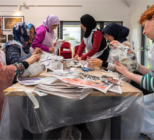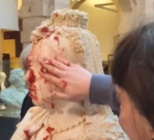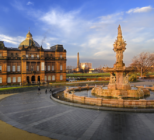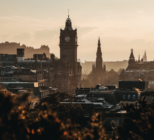New interpretation labels are to be added to displays at Kelvingrove Art Gallery and Museum, with the intention to reveal to visitors more about the history of some objects on display.
Charity Glasgow Life Museums, which runs the gallery and museum, is to introduce the labels as the first phase of a wider process which is hoped to address the legacies of slavery and empire across Glasgow’s civic museums over the course of the next few weeks.
It marks the initial phases of the process to transform how Kelvingrove and other Glasgow Life Museums address transatlantic slavery, British colonialism and their legacies, highlighting the untold stories behind the collections.
Kelvingrove will offer visitors the opportunity to engage with the added interpretation and give their views on how this process should be taken forward and how the collection can be used to explain the history of empire and slavery.
One of the new labels will highlight that Glasgow’s first museum at Kelvingrove Park, the forerunner of Kelvingrove Art Gallery and Museum, was in the home of former Lord Provost Patrick Colquhoun; a tobacco merchant who’s fortune was amassed trading in goods produced by enslaved African people.
Other parts of the collection were given to the city by people whose wealth came from plantations in the Caribbean and the work of slave labour.
A painting by Sir Henry Raeburn of Mr and Mrs Robert N. Campbell of Kailzie, that hangs in the Scottish Identity in Art gallery, will have a further label added that explains the subjects were owners of a plantation in Grenada with 232 enslaved Africans.
Further information on Kelvingrove’s own links to the International Exhibition of 1888, which funded some of the museum building, will also be installed.
Councillor Graham Campbell, Chair of Glasgow City Council’s Slavery Legacy Working Group, said: “Glasgow has been undergoing a reparative justice journey for a number of years leading to the Council setting up its Slavery Legacy Working Group; the University of Glasgow setting up the Beniba Centre for Scottish Caribbean Studies; and now Glasgow Life Museums reassessing the impact of the slavery and colonial legacy in its collections.
“I’m delighted to see the work of reinterpretation getting under way through this important step of re-contextualising museum artefacts as part of a necessary truth-telling about Glasgow’s deep involvement in slavery, colonialism and the British empire for which Kelvingrove was originally built to celebrate. The organised forgetting about slavery is over and the organised remembering of Glasgow’s involvement is in full swing.“
Duncan Dornan, Head of Glasgow Life Museums added: “As part of a long-term project that will change how we display and interpret the city’s collection, these labels at Kelvingrove mark an important first step in a continuing process which is beginning across Scotland. Visitors should learn more about Glasgow and our history as a result and understand more about the real cost of some of the city’s collection.”
Earlier this week, six recommendations were made to the Scottish Government as part of a new report on ways existing and future museum collections and spaces can better recognise and address Scotland’s imperial, colonial, and slavery histories.










